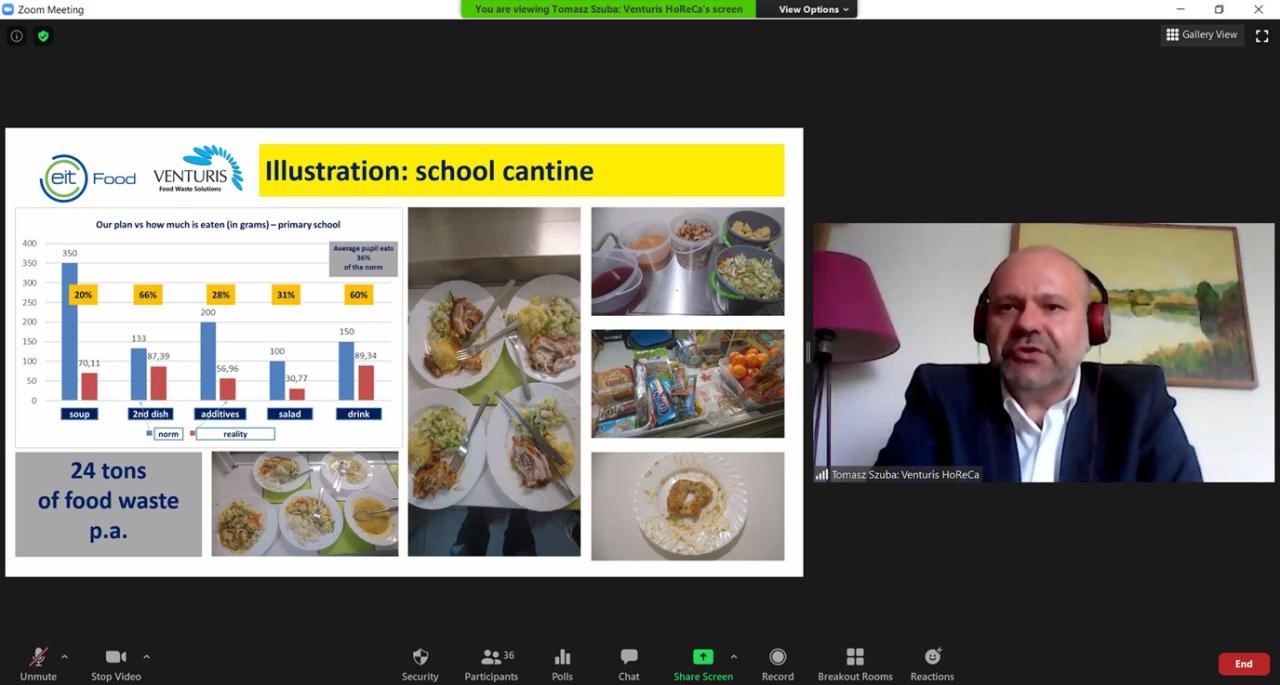English version also included below…
Subiektywny zestaw Top-10 najważniejszych wyzwań związanych z ograniczaniem marnowania jedzenia (wg mojej prezentacji w ramach Executive Government Academy 2020 by EIT Food and prof. Krzysztof Klincewicz).
TOP-10 wyzwania FW:1. Walka z marnowaniem jedzenia to nie kwestia 'CZY’, ale 'KIEDY’ i 'JAK’.2. Różne są definicje i interpretacje czym jest marnowanie jedzenia.3. Zachowanie hierarchii najlepszych możliwych rozwiązań problemu 'food waste’ – pamiętajmy, że nie jest to redystrybucja, ale zapobieganie.4. Oficjalne statystyki budowane są na bazie ankiet – dane zbierane i analizowane w ten sposób nie oddają rzeczywistości – wciąż jesteśmy 'ślepi’ jeśli chodzi o skalę, strukturę i przyczyny FW. Kluczowy jest tutaj rzetelny pomiar.5. Zwykle obserwujemy i analizujemy jedynie część łańcucha – nie mamy pełnego obrazu zjawiska FW. Przykład? Redystrybucja jedzenia nie oznacza z automatu, że to żywność uratowana.6. Świat jest często znacznie bardziej skomplikowany niż sądzimy – powodów, dla których marnuje się jedzenie jest dużo i są one ze sobą mocno skorelowane.7. Nadprodukcja – boimy się że jedzenia zabraknie w związku z tym produkujemy go zbyt dużo w stosunku do rzeczywistych potrzeb.8. Wciąż żyjemy w świecie nadmiaru – czy naprawdę potrzebujemy tyle żywności? czy naprawdę potrzebujemy kolejny rodzaj sera, jogurtu czy masła?9. Otyłość i nadwaga: zjadając więcej niż potrzebujemy również marnujemy jedzenie – mowa wtedy o metabolicznym marnotrawstwie.10. COVID i wpływ pandemii na marnowanie jedzenia (duże zakupy, brak siły roboczej w rolnictwie, zamknięte granice, itp.)
ENG:
Subjective Top-10 of key food waste challenges that we face as individuals, businesses, and policy makers (spoken during Executive Government Academy 2020 by EIT Food and prof. Krzysztof Klincewicz)
Challenge 1: it is not anymore a question of IF we should limit food waste – it’s a question of WHEN and HOW we will do it. Although important, even the best strategy or law without readiness and willingness to efficiently and effectively execute, enforce, and have positive impact – is meaningless. To be efficient and effective from public policy point of view requires probably right mix or balance of stick and carrot approach. Challenge number 2: saying ‘food waste’ – what do we mean exactly? Different people may have different ideas. If we do tour de table at the moment and ask you separately how you – individually define food waste – I am pretty sure we would have different answers. In public domain there are several definitions of food waste, food loss, food wastage (eg. FAO, FUSIONS, etc.). There are also many nuances such as: edible vs indedible; human vs animal consumption, etc.
Challenge 3: trying to define, design, and think about possible solutions to the problem of food waste – among others – we should take into consideration hierarchy of solutions. Number 1 priority should always be – prevention.
Challenge 4: available statistics in my opinion are just not reliable. One of key reasons is that they are based on surveys and not precise measurements. Human memory is elusive unless we measure and record what we discard. Plus it is always difficult to admit that we as individuals or businesses waste food. So according to Peter Drucker – management guru: If you measure the waste you can manage the waste. The more you know about it the more you can do something about it, and that’s where for example technology helps. In most cases especially at the policy level we are still blind and unaware of a real scale, structure, reasons, and value of food waste in our countries.
Challenge 5: rarely we see and analyse a complete food value chain. We usually see or analyse only fraction of it. The problem is that we waste food in all parts of value chain even if we redistribute it.
Challenge 6: world is often more complicated than we think. When I showed results of food waste project in school cantine, one of common reaction was – kids do not eat because they do not like what we cook. We need to improve our skills, cook better and we will not waste so much food. Correct? Well, partially perhaps. But going a bit deeper into analysis of WHY there is food waste – it turns out that there are so many more reasons why we waste food in this cantine and somehow they are interlinked.
Challenge 7: overproduction. As the example, let’s take a small 75 room hotel – south west part of Poland, in the mountains – close to Czech and German border. Behind this nice facade they have a habitual problem – they make more food than their guests can actually eat. It results in 39 tons of processed food per year in the bin, equivalent of two hundred thousand EUR.Why? Because chef miscalculates/overestimates average eatable portion by a guest. Again people eat much less than expected. This difference between kitchen’s perception and reality, multiplied by number of guests per day times number of days per year equals thirty nine tons and two hundred thousand EUR of loss.
Challenge 8: we still live in the world of excess. Do we really need so much food and so much variety? All this has a cost: socio-ethical, environmental, and financial.
Challenge 9: in Poland more than 50% of adults are overweight. If we eat more than we really need we also waste food – it is called metabollic waste. This waste has also a cost.
Challenge 10: last but not least – pandemic. People were buying more than usual, we have all seen pictures of shops with empty shelves. Transport networks were disrupted due to closed borders. Seasonal workers stayed at home due to closed borders – so more food got spoiled on fields. All those aspects have consequences on food waste.



